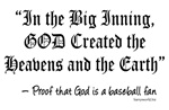Part of the answers to some of the questions I just posed are available and for the historian, in some cases, are common knowledge. Another fascinating aspect of the history of baseball has to do with these stories and how they are told from one generation to the next. Most other sports are easy to explain because the rules are simple. Most team sports involve getting the ball into a goal which is either taken by a player or released by a player in some way, shape or form. One team tries to get to the goal and the other team tries to stop them from reaching the goal. If the team attempting to stop the other team from scoring with the ball is successful, they become the offense and get to try to score on the other team. Baseball is a lot more complicated than that.
The American Association was founded in the year of 1882 to be competition for the National League, which was founded in 1876. With the United States of America being against monopolies, it was understood that another professional baseball league would eventually emerge and provide competition for the established league. It is only fair. One of the interesting things about the emergence of the American Association had to do with its target audience. The National League had attracted the more wealthy America, setting a president that lead most to believe you needed to wear a suit and tie to attend. Looking at any pictures of baseball being played in the National League at that time, it seemed as if that was the case.
The American Association wanted to appeal to the working man. They charged half as much for admission as the National League (25 cents as opposed to 50 cents in the NL). The National League was also against the presence of beer and alcohol being anywhere near the ballpark. The American Association was all for selling beer in the ballpark and brought with it the revenue of the Beer Companies who advertised with the league. Though the popularity of American Association Baseball seemed to be higher than that of the NL because of its target audience, the American Association only lasted 10 seasons and was out by 1891. However, baseball was able to keep that middle class fan and the sale of alcoholic beverages was permitted up until the times of prohibition. In addition, the National League adopted a new seating charge of 25 cents (the price the American Association charged) for select seats at each ballgame. These seats were generally located in the highest of locations and the view of the field was usually obstructed. It was also the first time the phrase "nose bleed seats" was used and defined.
Unless you know your history of the Pittsburgh Pirates, you may not know that they started as an American Association team. The region has technically had a team since 1876, which was the first year of the National League. They had a barnstorming team called Allegheny, which was not associated with any professional baseball organization or league. In 1882, they became an original member of the American Association- called Allegheny. They became the first American Association to jump to the National League- doing so before the 1887 season. They were then known as the Pittsburgh Alleghenys. Ironically, the team's name was that of the two neighboring cities, Pittsburgh and Allegheny. Allegheny became part of Pittsburgh in 1907.
1890 saw the birth of the Players' League, a lead created by the players for the players. It was innovative at the time because it represented the first organized players union in the history of professional sports. Because of a lack of funds and confidence from the owners, the league would only last one season. The Players' League ended up taking many of the better players in the National League and when the league folded, the players were awarded back to their previous franchise as they were considered still property of them. Of course, this made many of the National League teams better than they were the year before.
Two teams though, the Boston Reds and Philadelphia Athletics, were absorbed into the American Association. These two teams reserved the right to keep a certain amount of players- the rest were welcome to sign and play for whoever they wished. The Athletics failed to keep a 2B by the name of Lou Bierbauer. He signed on to play for the Alleghenys of the NL. The American Association went ballistic over this and accused the team, among other things, as "pirating" the player away from his team in the AA. Remember... the Athletics and Reds were yet to play a game in their new league at this time.
Though the Pittsburgh club was never found guilty of any wrongdoing, the AA and the Athletics thought this was a tactic that was unprofessional and simply should not have been done. The Alleghenys thought of this as a joke and made fun of the allegations calling themselves the "Pirates" for the 1891 season. The name "Pirates", though used by the team from that season beyond, was not part of the teams' uniform until the 1912 season. They went with the nickname from 1891-1911, but were known as the Pittsburg Pirates. The "h" was removed per a decision made by one of the governing bodies of the state of Pennsylvania.

 RSS Feed
RSS Feed
